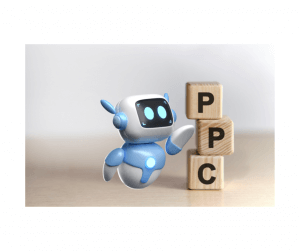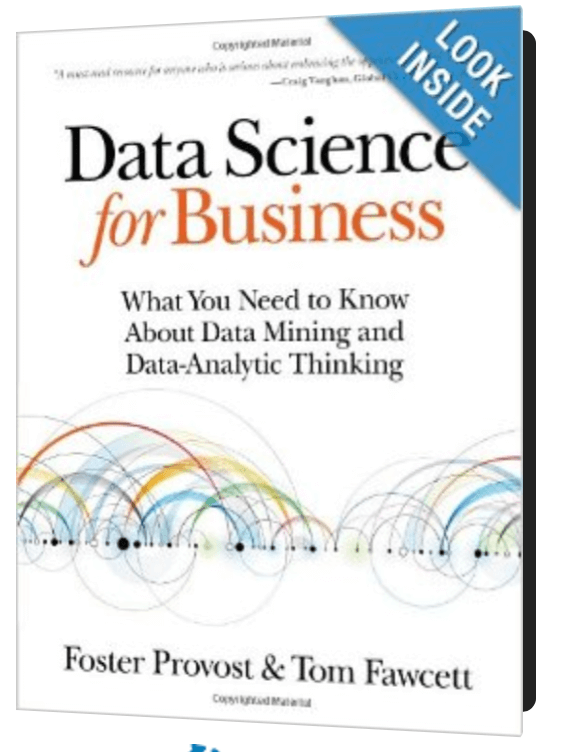 Amazon is the king of repricing. They have an inventory of tens of millions of items (maybe even hundreds of millions, once you add in digital items).
Amazon is the king of repricing. They have an inventory of tens of millions of items (maybe even hundreds of millions, once you add in digital items).
And they’re always experimenting with pricing strategies. Depending, on the item, the season, the marketplace and other factors, Amazon might apply different repricing strategies to the items they sell.
Today we’re going to look at a page out of the Amazon Repricing Playbook. We’ll analyze the strategy Amazon used to reprice a book on data science (don’t worry, the irony isn’t lost on me). Keep reading to learn more.
We came across this book while testing Profit Bandit at a local Goodwill shop, here in Portland. We clicked over to CamelCamelCamel and thought the shape of the historical Sales RankThe sales rank of products on Amazon ind... More graph was worth investigating further.
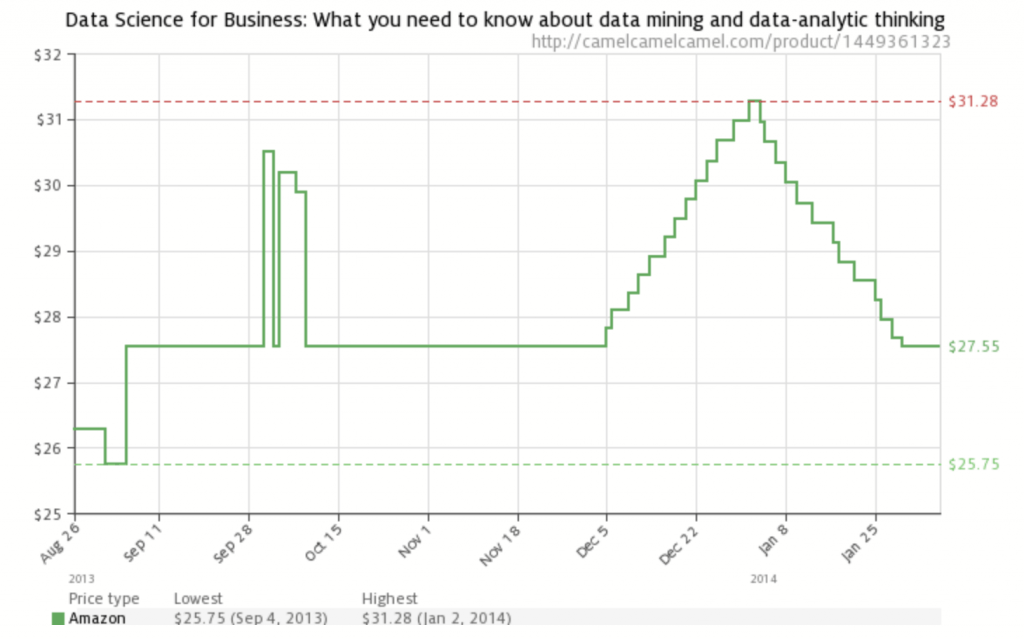
To really understand why Amazon made the pricing choices it did, we need to start by looking at 2 things:
- 3rd-Party Seller Pricing
- Sales Rank
3rd-Party Seller Pricing
Now let’s look at what 3rd-party sellers were doing during this same period.
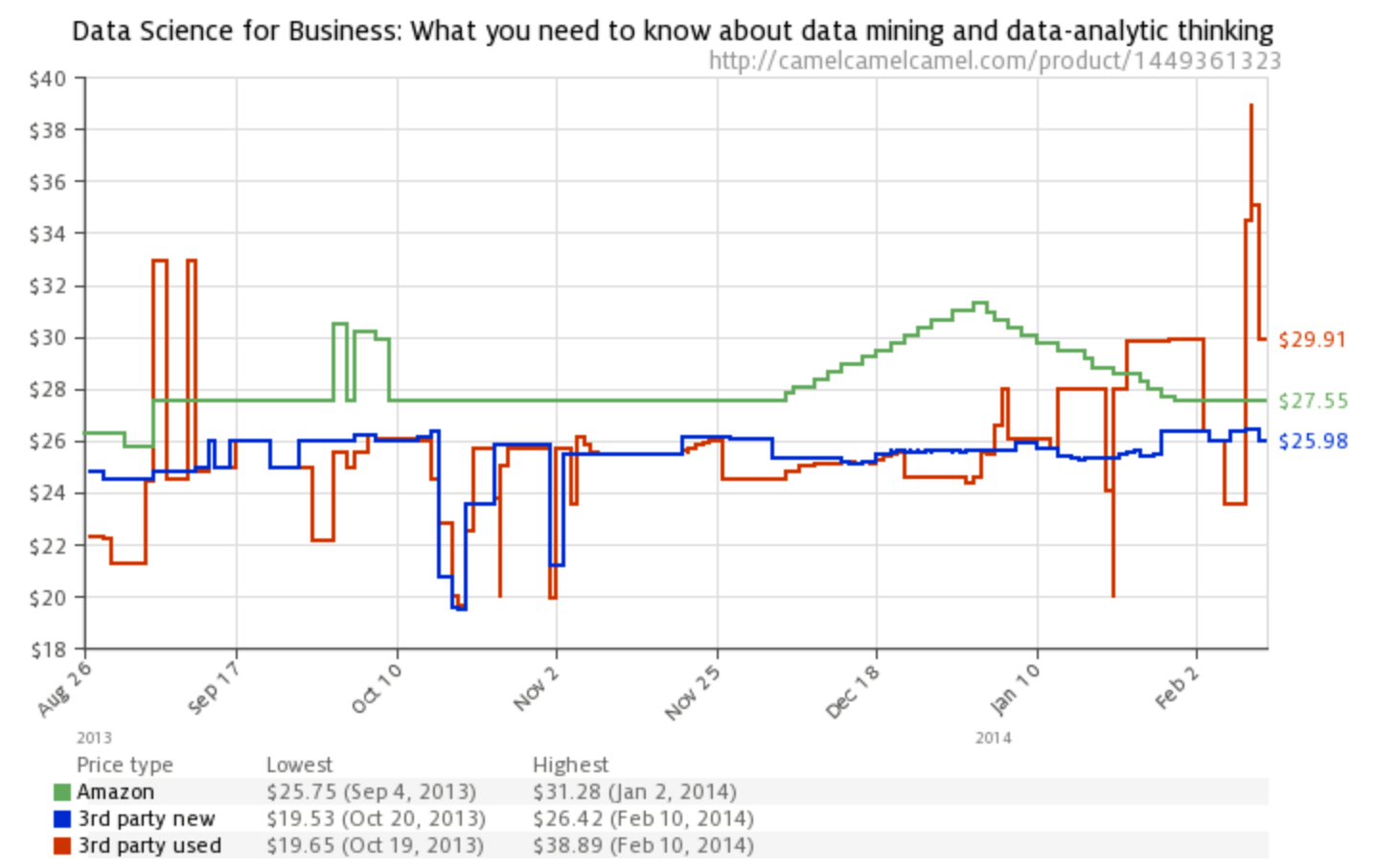
You can see that there was very little movement in 3rd-party pricing, for both new and used editions of this book during the period that Amazon was actively repricing.
So we can rule out activity from rival sellers as Amazon’s motivation in repricing.
Sales Rank
Now let’s take a look at the Sales Rank history for this item:
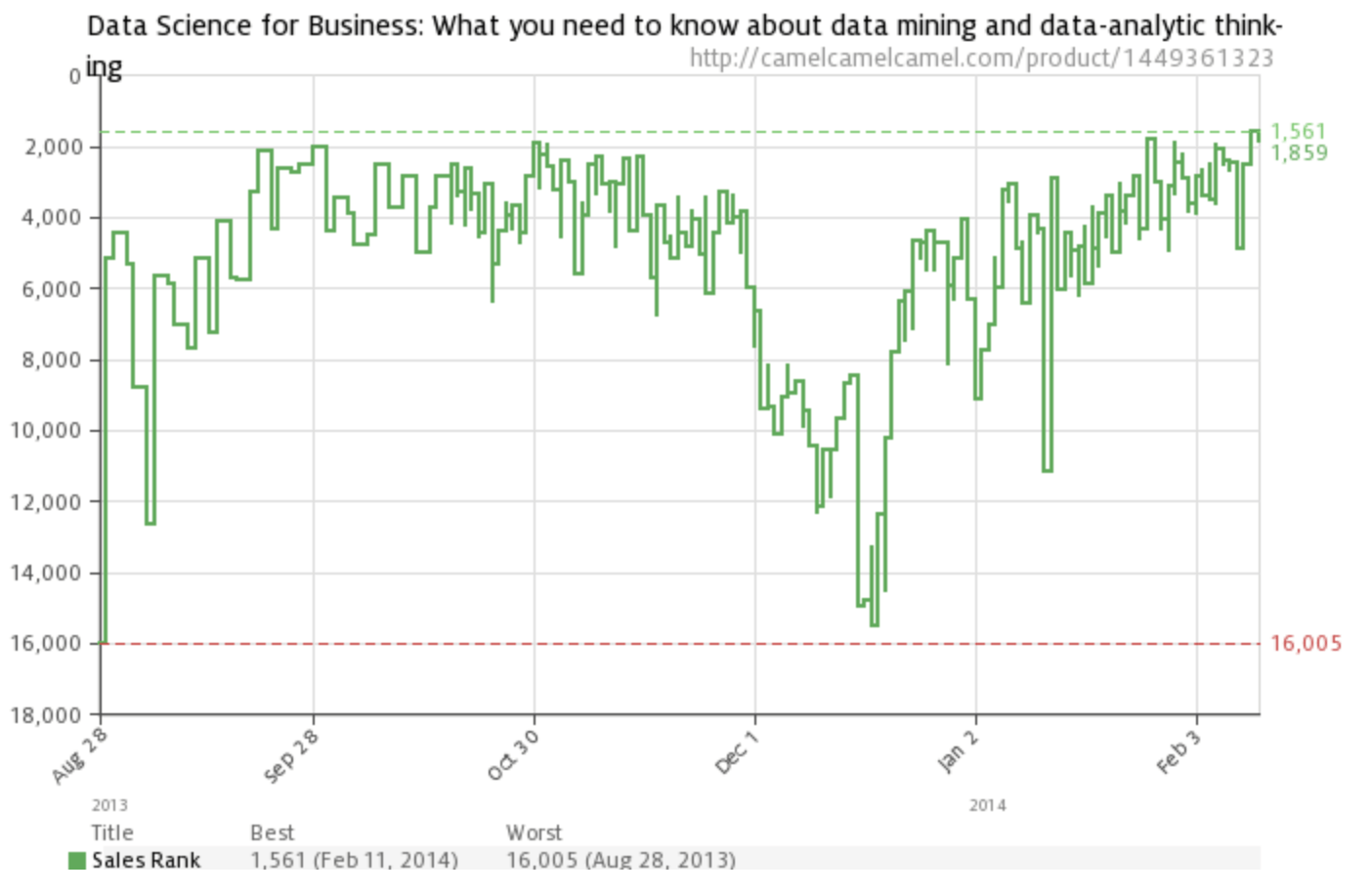
Based on the chart above we can tell that the Sales Rank bottoms out on approximately December 18th.
Now looking back at the first graph, we can see that Amazon’s price reached its peak right around January 2nd.
So Amazon continued to increase its price, even as Sales Rank was falling. But why and what can you learn from this?
Results
It’s hard to know with 100% confidence what Amazon learned from their experiment, or why they ran it in the first place.
But we can estimate sales volume by looking at the Sales Rank graph. By looking at the gaps between spikes in the Sales Rank graph can see that the rate of sales decreased during the repricing experiment. Without knowing exact sales figures, we can’t know whether Amazon actually made more money on fewer sales at a higher than usual price.
But that’s the kind of information you should be learning about your business through repricing experiments. If you raise prices, will you make more profit on fewer sales?
Lessons Learned
The biggest lesson that you can learn from this is that Amazon clearly went into this with a plan and they stuck to it. They weren’t swayed by rival seller activity, they weren’t influenced by worsening sales rank.
Instead, they ran their pricing experiment through to the end. And you better believe that Amazon will learn SOMETHING from this and they’ll use it to improve their rerpricing in the future.
You should do the same thing. The next time you have significant stock of an item, you should plan your own repricing experiment. It doesn’t have to be just like this, but you write out your pricing plan, step by step and then execute it, start to finish. And then learn from it.
That’s the key to intelligent repricing: planning, experimenting, learning and repeating. Over time you’ll see improvement in the way you set your prices and in turn, improvements in your bottom line.
Share Your Thoughts!
If you find an item on CamelCamelCamel where Amazon has implemented an interesting pricing strategy, send it to me! I’ll take a look at it and I might feature it in a future edition of the Amazon Playbook.


